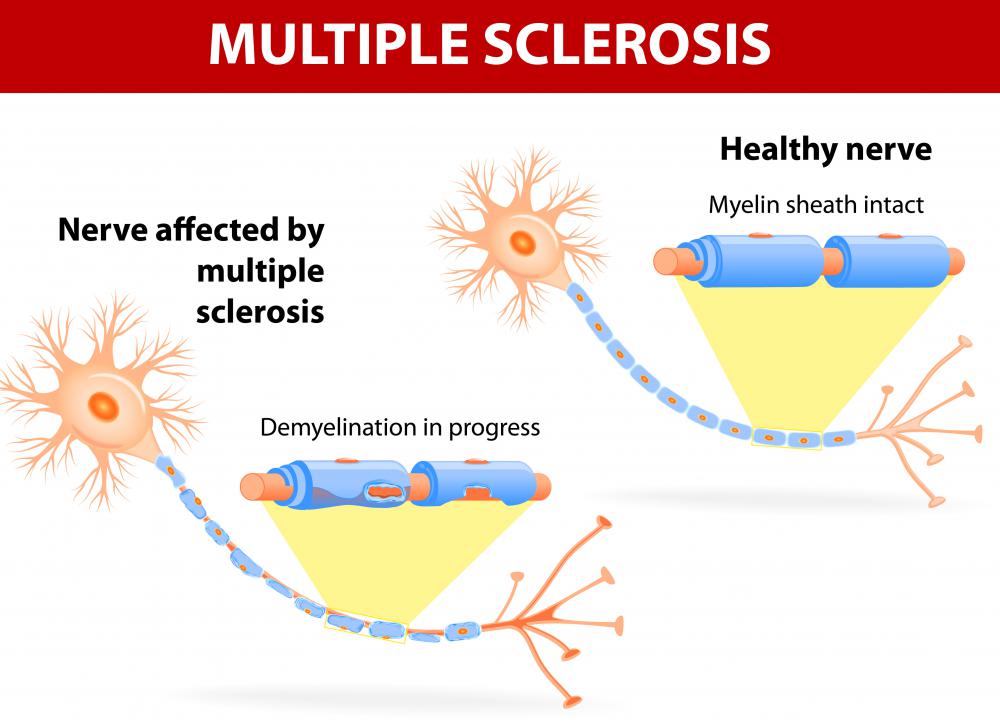At TheHealthBoard, we're committed to delivering accurate, trustworthy information. Our expert-authored content is rigorously fact-checked and sourced from credible authorities. Discover how we uphold the highest standards in providing you with reliable knowledge.
What is Vertical Nystagmus?
Vertical nystagmus is a type of involuntary eye movement in which the eye moves both rapidly and slowly on a vertical axis. The eye might either move upwards rapidly, then downwards slowly, or vice versa. Depending on how severe the condition is, it can lead to vision impairment and vertigo. Nystagmus can be either congenital or acquired.
The most common causes of this condition are congenital. The condition is noticeable even in infancy and usually lasts the individual's lifespan. Fortunately, congenital nystagmus is often milder than acquired nystagmus and is more manageable. Congenital nystagmus is usually also non-progressive, so the severity of the condition is static.

Acquired nystagmus, on the other hand, is often more severe. While some individuals with acquired nystagmus might report feelings of dizziness due to the involuntary eye movement, others might find the condition debilitating enough to have extremely impaired vision. Other than the physiological discomfort, the condition can also lead to emotional distress for individuals concerned about their appearance. Vertical nystagmus can be acquired through a variety of means, including diseases, nervous system disorders, and exposure to toxins.

The condition can be a symptom of some serious diseases. It can be a sign of brain tumors, Whipple's disease, or multiple sclerosis. Less serious conditions that lead to vertical nystagmus include albinism and Ménière's disease. Nystagmus might also be a symptom of thiamine deficiency.
It is also possible that vertical nystagmus is a result of several disorders of the nervous system. One common cause of acquired nystagmus, for example, is the nerve damage suffered during a stroke. Severe head trauma can also lead to the development of nystagmus. The condition can be a symptom of antidepressant withdrawal as well.

Exposure to certain toxins can also cause vertical nystagmus. Common toxic causes of nystagmus include lithium and salicylic acids. Use of illegal drugs such as Lysergic acid diethylamide (LSD) and ketamine can cause enough damage to the nervous system to cause nystagmus. In rare cases, alcohol intoxication might also be a cause of nystagmus.
Although vertical nystagmus is traditionally considered untreatable, several developments have shown promise for curing the condition. The drugs baclofen and gabapentin have both been found to show significant improvement in patients with nystagmus. Other notable treatments include acetazolamide, levetiracetam, and memantine. Several professionals are also attempting to develop a surgical treatment for nystagmus, although favorable results are too few to consider significant.
AS FEATURED ON:
AS FEATURED ON:

















Discussion Comments
@cloudel – You have probably heard of it by its other name, vitamin B1. You probably have nothing to worry about, because it is present in a wide variety of foods.
I have read that it helps the body break down sugar. We have all heard how important the B vitamins are, so I'm sure it does other things, as well.
You can get thiamine from many kinds of nuts, beans, and green leafy vegetables. You can also find it in whole grains, rice, and enriched flour.
I agree with you that the possibility of getting vertical nystagmus from something as simple as a vitamin deficiency is frightening. That is just one more thing to motivate us to eat a well-balanced diet.
What exactly is thiamine? I've seen it on the ingredient list of several packaged foods that I buy, but I've never heard of having a thiamine deficiency.
I'm guessing it must be important to our bodies, since not getting enough of it could cause vertical nystagmus. That is a scary thought. Something that we rarely even hear about could result in a bad eye twitching condition if we don't get enough of it.
What are some good food sources of thiamine? I want to be sure I am getting enough of it to prevent nystagmus.
My cousin was hit by a car while riding a bike, and she wasn't wearing a helmet. She suffered a severe concussion after her head hit the pavement, and her vision was affected.
For several weeks after the incident, her eyes would drift slowly upward and then twitch downward quickly. The constant involuntary motion made her very dizzy, and sometimes, she would become very nauseated.
She tried to keep her eyes closed as much as possible during her recovery. If she couldn't see things moving up and down, then she wouldn't have the sickening symptoms.
I have a friend with albinism, and he has vertical nystagmus. He told me that nearly every person with albinism has some sort of nystagmus.
His skin and hair are white, and his eyes are pink. He is very sensitive to the sun, and it seems that his nystagums worsens when he is in a room with open curtains on a bright day.
I can't imagine having to deal with this. Just watching his eye movements makes me dizzy after awhile, so I find it hard to make eye contact with him for very long.
Post your comments